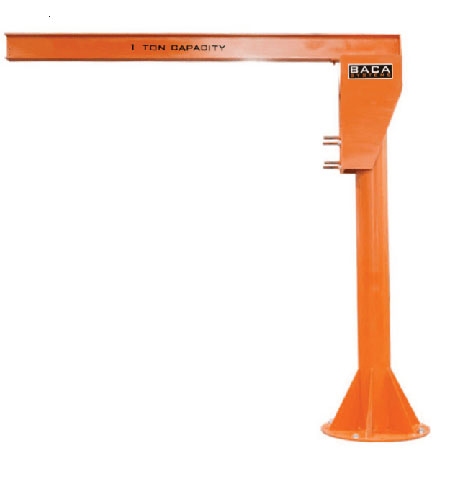If you operate a manufacturing plant and are looking for an equipment piece to streamline your production process, a jib crane may be a good option. Jib cranes are versatile pieces of equipment that can help simplify repetitive tasks and help your employees provide a safer work environment. Further, these cranes can be used in tandem with other equipment pieces to maximize manufacturing outputs.
Jib Crane Overview

A jib crane is an overhead lifting device with an attached horizontal member, commonly referred to as a jib or boom. Jib cranes are ideal for small workspaces and repetitive lifting tasks. The task of the jib within the crane is to support the other parts of the device, including the crane and the movable hoist. Most commonly used in construction and industrial applications, jib systems are versatile and can be used in conjunction with an overhead bridge to enhance productivity.
Jib crane configurations are simplistic in design but can accommodate up to 15 tons of weight in many applications. These cranes are designed with workers in mind and can help improve safety and reduce employee injuries. Jib systems assist workers during the manufacturing process and can maximize production capabilities.
Jib Crane Components
Jib cranes are relatively simple to operate because they have a straightforward configuration. These cranes do not require extensive maintenance and are simple to repair. Jib cranes do not have many components, decreasing the likelihood of system failure.
- Reach: The reach or boom is the straight beam that the electric hoist is situated upon.
- Mast: The mast or pillar is comprised of vertical beams that support the reach on mast systems.
- Manual hoist: Most jib cranes have manual or electric hoists that move the load up and down.
- Controls: All cranes are outfitted with controls that help the operator regulate the rotation of the arm and the movement of the trolley. Most controls are buttons that must be manually pushed.
- Trolley: The trolley carries the crane hoist along the length of the boom. A motor powers most trolleys, but some are manual or pneumatic.
- Rotation stop: Most cranes are equipped with a stop device to limit the crane’s motion in an emergency before it collides with another object.
Rotation capacity: Most freestanding jib cranes have a rotation capacity of 360 degrees. However, other jib crane types have a boom rotation capacity of 200 degrees.
This is not an exhaustive list of jib crane components. Certain environmental factors may require other parts to be added to the configuration. Some cranes are equipped with corrosion resistance features and other features to resist extreme weather elements such as heat and humid.
Freestanding Jib Cranes
The freestanding jib crane is the most common type of jib system. They are used in many applications because they are versatile and can be installed in small spaces, either indoors or outdoors. Freestanding cranes are ideal for open areas because they can be used in conjunction with large bridge crane systems. Jib crane systems can accommodate capacities up to 15 tons and have 360 degrees of rotation capacity.
Freestanding jib cranes can accommodate high production, high-performance work applications. They are ideal for projects that require fill circular lifting applications. Further, freestanding cranes can be motorized to increase the accuracy of load positions and to quicken the production process.
BACA Systems is a leader in the manufacturing industry, providing reliable, cost-effective tools to several different industries. We specialize in delivering jib cranes design services, stone slab lifting tools and freestanding jib cranes. All of our fabrication solutions can help you grow your business by streamlining your production process and increasing efficiency.
